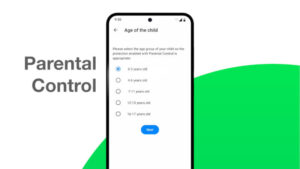Earlier this week at the Gartner Symposium ITXpo in Orlando, Microsoft’s lame duck President, Steve Ballmer, once again restated his vision for “One Microsoft/one world.”
Actually, we jest. As reported by Larry Dignan on CNET, the vision remains a single Windows GUI to be used across all devices, from smartphone to tablet to PC. That’s what he and the rest of the crowd in Redmond have been saying since long before the release of Windows 8, when Metro was still Metro, which was their first attempt at implementing this one-size-fits-all vision. Nevermind that it hasn’t worked for them so far. You know what they say about “try, try, try and try again?”
“Ballmer said it’s realistic to have one Windows platform across multiple screens. ‘Sometime in the next short cycle we’ll see great progress on that. What it really means common user interface, common programming interface, common security architecture and user interface adaptability and common developer model and key services,’ said Ballmer.
“He noted that a common experience will be coming sooner rather than later, but ‘I’m not going to give you a schedule.’
“‘We need to build a common operating system as well as a common back end based on what the device knows about you,’ said Ballmer.
That last, “based on what the device knows about you,” we find to be a scary thought. Yet another reason to stay away from Microsoft.
| [yop_poll id=”28″] |
Here in Linuxland it appears that Mark Shuttleworth is of a similar mind as he readies Ubuntu phone for prime time. He may be taking a slightly different tack, however. From screenshots we’ve seen, it appears as if the Ubuntu phone’s interface won’t be exactly the same as desktop Ubuntu but will be intuitively the same.
If so, we think that’s a good idea and much preferable to Microsoft’s vision of Metro everywhere.
We see the usefulness of phone, tablet and desktop sharing a common interface. This would not only make it less of a brain strain on the user when moving from one device to the other, it would also come in handy for syncing devices, etc. The trouble is, the dynamics of a small phone screen compared to a large PC or laptop screen makes an exact copy unrealistic, something Steve Ballmer would’ve realized by now if he listened to his users.
Also, mobile devices are used for different purposes than PCs, meaning the workflow needs of a phone are in most cases completely different than on a desktop. Ideally, an operating system should be designed to recognize the differences between large screen devices with a keyboard and small devices that are designed to be used on the go. They should be enough alike that a user can easily move back and forth, but the idea they should be exactly the same is simply wrong, in our humble opinion.





If anyone wouldn’t mind using different devices with the exact user interfaces, it would probably be the older generation, very busy men who can’t be bothered to really care about what they use or ofcourse Steve Ballmer : P
I understand Shuttleworth’s idea is that UI may be similar but the user interaction is very different. He made a comment that the desktop/laptop will not disappear and people will be using them. The comment implied the user interaction will be different and dependent on the device. Also, the Ubuntu to goal, as I understand it, is to provide an OS/distro that adapts to the user’s equipment and defaults to the appropriate version (desktop, tablet, smartphone) of the UI.
Ballmer’s version is there is one UI and mode of user interaction across all devices. This ignores the major differences between the devices.
Of the two approaches, Canonical’s is harder to implement but is more realistic. Users will have different modes of interacting with different devices.
As far as I see it. When it comes to a phone…whether “smart” or otherwise, I only ever really need it to do just ONE thing…put a call through…granted…its nice to have internet on it…and it’s nice to take photos and stream newsfeeds etc. but all I’ll ever use this Android phone I have from T-Mobile for?…is making calls…i have FOUR laptops at home…along with TWO desktops, so I don’t have a need to be in a car…or on the bus / plane / shuttle surfing the web or viewing Twitter feeds, I occasionally might check an e-mail I receive, but that;’s pretty much it. This giant rush to have everything be exactly alike on tablet – phone – desktop – laptop is kinda creepy….
I have to wonder just how high up the money goes in trying to put lipstick on this industry-wide pig. The author absolutely nailed it. Exactly what I’ve been saying all along, but without all the gratuitous gentility. Let’s face it, only a child couldn’t see past the first ‘Hey wouldn’t it be cool if…’, because … no … it wouldn’t be. So why couldn’t Ballmer? The Gnome crew? The KDE crew? Whiskey Tango Hotel, over!
I mean, the only reason phablets have those stupid interfaces is as a compromise to overcome the shortcomings of their form-factor. “Hey! I know! I want to have to reach for my screen to launch an app.” said no one ever. And the same goes for touchpads and mice. I’m most productive with my hands on home-row, not the mouse. Every time I have to swipe, pinch, reposition, etc., I’m losing time. Now I’ve got a text editor whos UI is oriented to touch and gesture. Did anyone really think that through?
Workflow?! On a phone?! People play Angry Birds on their phones because that’s about all one can reasonably to with a phone.
Granted, a phone makes a great, well, phone. Squeezing in cameras, GPS, audio player, and even a miniaturized web-browser for emergencies isn’t a bad idea, but the only other feature they really have to offer us is the very one they’re loathe to give us without charging us body-parts: mobile wifi hotspot for our more usable tools.
Nor is the desktop the tool I use. The apps are the tools I use. The desktop needs to get out of the way.
And, while I’m at it, has anyone ever just intuitively known what an icon did without first hovering over it half a dozen times to get the little balloon to pop up explaining its purpose? So why not just shrink (or eliminate) the icons, and keep the text? Because they’re cool?! Is it going to take acts of violence to get sane peopel back in charge?
Global menus?! Disappearing scroll-bars?! Grow up!
I guess it’s all just a way to keep people thinking they’re “futuristic” when it comes to technology. If you don’t have a phablet, then you’re living in the 30’s, and if you still use a desktop?….then you are right up there with Fred Flintstone and the Cro-Magnon Crew!
KDE aims to provide not a single interface for multiple devices but personalized versions of Plasma: Desktop, Netbook, Mobile, Active (for tablets) and Media Center.
What they do, and I think is good, is promote code reusing and interface adaptability e.g. via Qt’s QML, instead of forcing a single interface on top of everything.
@Marcus Rhodes: there are several points I could debate but I’ll keep it short: don’t equate yourself with everybody.
For example, I don’t play Angry Birds (or other games) on my smartphone, I use it for work (calls, sms, e-mails, light webbrowsing, GPS, etc, etc, etc).
Different devices need different UI’s. The underneath OS can be very similar or the same. Shuttleworth implied this with his comment about desktops will always be around. As noted above, this implies that each device will an appropriate UI.
I personally like to use the Keyboard instead of a mouse (it is much faster for me), so I like Ubuntu’s Unity because I can launch virtually any application with about 4 keystrokes (or less… usually less). It is akin to having a shortcut for every single thing. And there is the HUD which makes finding/using things very fast, faster than the traditional Alt method.
Having a similar interface that is used differently (ie, tapping) would make it easier for the common person to interact with it. Even using the mouse for Unity isn’t too hard, it is a bit harder to get to the Applications Menu and categories… but that is why this is GNU/Linux. I can install multiple DE on any distro (well Unity only really works for Ubuntu). I don’t even have to install a distro, or have a hard drive. I can run puppy from CD,USB,SD, etc..
I am glad we have choice. With Windows and Mac, you are locked in to their interfaces. I can run XFCE,KDE,LXDE,JWM,awesome, Razor Qt, Unity, Gnome, iceWM, OpenBox, etc… etc.. etc.. etc.. 🙂
So, what have we got here? More shills? Please! Equate myself whith others?! Please, use better logic. Debatable point?! Gee. How magnanimous of you to spare me. Of course they’re debatable everything is. Until it comes to the new UIs. The vendors seem to be absolutely unwilling to entertain any debate.
As for HUD, tried it. I found that I was right back at the blinking prompt of my 1984 Commodore 64. Besides, the changing environment of the installed software can change what keys one needs to press to get where you want to go. A customizable menu that responds to the keyboard still trumps all.
Besides, thats just for lanching apps. Then one needs to deal with the apps themselves, and they’re getting very keyboard hostile. And that is what’s getting so many of us so hostile.
So, instead of fronting for these ‘social engineers’ and would-be marketing mavens, and calling the rest of us rude names (or effectively doing the same through snide comments and insinuation), why not just acquire a bit more self-honesty and respect for what an awful lot of people are trying to tell you? We’re trying to help, after all. What are you doing?